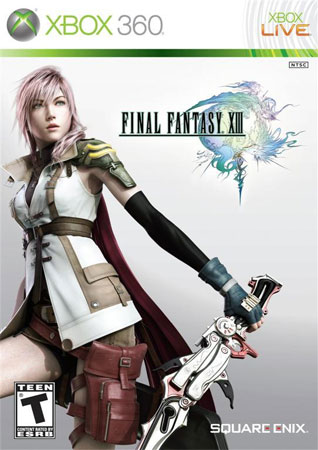
Final Fantasy XIII released in Japan on December 17 of last year, and it finally made its way overseas on March 9. I bought my copy on the release day as part of the Xbox 360 250GB hard drive bundle at Amazon and even got a snazzy faceplate with it. Since we weren’t sent a review copy of this one, I didn’t feel compelled to blast my way through in a big rush to write a review. Instead, I’ve taken my time with the game and savored every bit of it. I’m currently 40-something hours in, and the end is in sight. I think pacing myself for this one has given me a different perspective than a lot of reviewers had when they initially reviewed Final Fantasy XIII close to the game’s release, so for once I’m glad to have dropped my own cash instead of relying on a press connection.
Veterans of the Final Fantasy series will know that the numbered installments are connected to each other thematically and in certain universal aspects, but the plots and characters do not continue from one game to the next. In fact, each new Final Fantasy introduces a brand new universe and cast of characters. Sure, you’re likely to run into a Chocobo, a guy named Cid, and a bunch of god-like summonable beings in every game, but each time you start a new one you’ll be in for a brand new story without having to worry about continuity from the past.
This one is set in a sci-fi world where a Dyson shell called Cocoon hovers above a mysterious planet called Pulse. There’s a complex social and geographical ecology between immensely powerful spirit-creatures called fal’Cie, the humans that inhabit Cocoon, humans called l’Cie who have been “branded” by the fal’Cie, and the monstrous zombie-like Cie’th that failed l’Cie eventually may become. Final Fantasy XIII‘s story is much too complicated to go into at length without spoiling anything essential, so I’ll leave it at saying that the game opens with a young woman named Lightning boarding a train to save her sister, Serah.
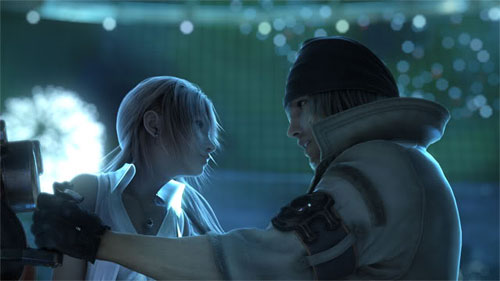
Lightning really is an intriguing video game hero, particularly in the Eastern roleplaying game genre. A soldier on a quest to save her sister, she is one of the toughest game girls I’ve run across. Tough women in games is nothing unusual, but it’s worth noting that Lightning compromises nothing in her toughness. She’s not a heroine who flaunts her body or feels the need to be sexy, even though she is a very attractive woman. She also has no need for help or rescuing. Lightning is a woman on a mission, and she actively shuns the assistance of others in the early game, male and female alike. I’ve already seen a few other sites commenting on Lightning’s uniqueness as an empowered woman in this video gaming world, and I’m convinced she is as important a new character as we’re likely to see in games this year.
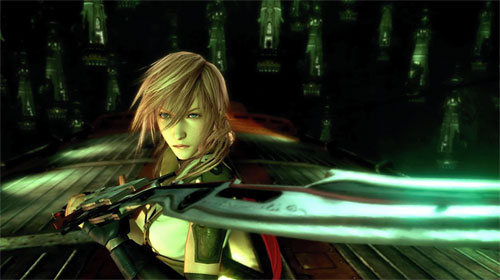
The rest of the main characters are likeable and useful, with the possible exception of Hope. If you were wondering when the inevitably overly emotional and girlishly pretty boy would show up, this is your guy. Hope is a white-haired kid who shows up early in the adventure, immediately wants to off one of your other characters, and generally makes a whiny nuisance of himself for the bulk of the game. He is actually pretty powerful in certain situations, but I found myself having to force myself to include him in my combat party due to his inane chatter during battle. Even when he’s at his most useful, however, he’ll be the character that consumes the most of your precious Phoenix Downs as he consistently takes dirt naps every time the wind blows in his direction.

Final Fantasy XIII employs a system of combat roles for your characters, and you’ll be leveling several roles up simultaneously for each character. The roles include the Commando (excels in physical combat), the Ravager (specializes in magic and creating combos), the Sentinel (a defensive “blocker” role), the Medic (healer), the Saboteur (debuffer), and the Synergist (buffer). Once you’re a good ways into the game you’ll get the ability to customize your combat party and select three characters who will be your active fighters. You then will further customize the party by setting up paradigms for them to use in battle. A paradigm is an arrangement of three roles into one unit. For instance, you might have two Ravagers and one Commando, making up the Relentless Assault paradigm. You’ll set up a series of these paradigms that you’ll carry into battle with you, and you can switch between them on the fly during combat, depending on what you need for the current battle conditions. Have injured characters? Switch to Combat Clinic to heal them. Need more offensive magic while providing some defense? Switch to Mystic Tower.
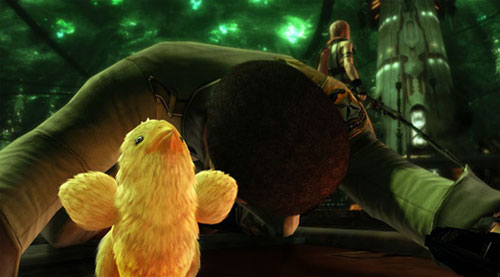
The leveling system relies on a sort of experience points called CP. You will go into an interface called the Crystarium to spend your CP. Once there, you’ll select a specific role for a specific character and bump up their abilities by paying CP to travel from node to node in a ring-like leveling structure. The Crystarium leveling system reminded me a bit of the Final Fantasy X leveling nodes. It’s pretty straightforward, and it allows you to prioritize whether it’s more important to get new abilities, raise your strength, equip more items at once, or a number of other essential options.
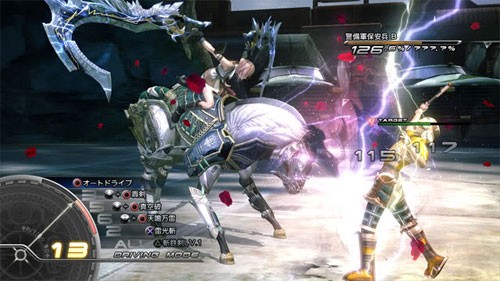
Another big component of character progression is the ability to upgrade your equipment. At the end of many battles you’ll be rewarded with “spoils.” Sometimes these consist of Phoenix Downs, health potions, and other direct consumables, but more often than not they’ll consist of component parts. You’ll use those components in a fairly complex interface to bump up the stats on your weapons and accessories as you move through the game. The upgrading system is pretty complicated and has a steep learning curve. Most of the curve requires a lot of trial and error and patience as you see which components will work the best in upgrading what sorts of equipment. The upgrades are essential and rewarding, but be forewarned that they can be a pain in the neck until you get the hang of it.
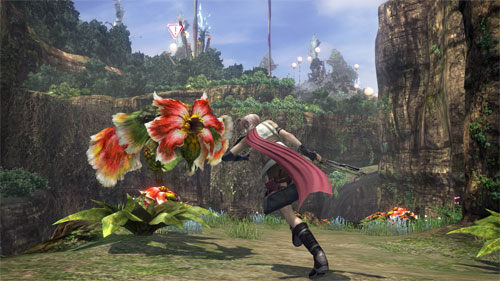
A lot of the people I’ve talked to and a lot of the reviews I’ve read talk about the linearity of Final Fantasy XIII. While the beginning hours of the game do include some of the most linear gameplay I’ve ever seen, the game really opens up around Chapter 11. Admittedly, it’s a strangely long time, but once the game stops holding your hand and lets you start making choices, the difficulty quickly ramps up. Early (meaning the first 15-20 hours) encounters in the game are largely simple matters of working with the three characters you’re given at any specific time, but a lot of strategy comes into play once you can choose your own party and paradigms. Picking the right characters for the right battles is a very strategic and important part of the gameplay, as is the ability to choose and switch between the right paradigms. Changing your Ravager to a Medic at just the right instant can mean the difference between success and failure. With some of the battles lasting more than ten minutes each, you really don’t want to fail.
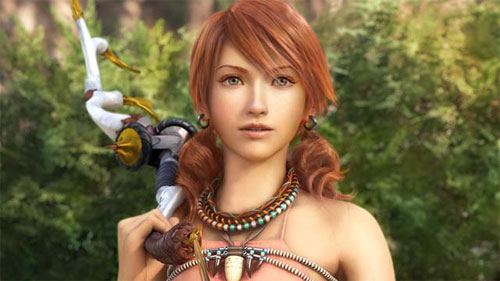
I am playing Final Fantasy XIII on the Xbox 360, and the game looks gorgeous and plays beautifully. The Playstation 3 seems to be the go-to platform for Final Fantasy purists, but I really haven’t noticed any issues in my 360 version. I’m also a sucker for gamerscore and achievements, so I tend to go with the 360 version on multiplatform games.
As a fan of the Final Fantasy X school of JRPGs, I have nothing but love for Final Fantasy XIII. It takes a lot of familiar elements from previous games, adds some neat gameplay twists of its own, and places the whole thing in an intriguing and emotional story about fate, free will, and family. If you’re looking for a console RPG to eat full days of your life, this just might be the one you want.
Rating: 4.5 / 5 Stars


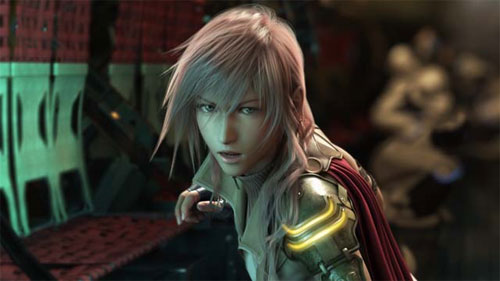
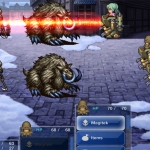
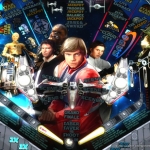
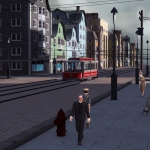
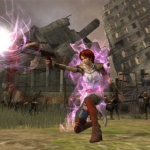

Really? You think Hope is more annoying than Vanille? lol
I just got started with FFXIII and for the most part, I enjoy it. Lightning is definitely my favorite and I’m not ashamed to admit that the sight of her slapping Snow around is amusing. I really missed diving into the mythology of Final Fantasy, but I’m optimistic that I’ll get the chance to play more Square games in the future on my 360. :)
The last FF I played was FF-VIII (wow, that was a long time ago). But it sounds like many of the play-elements of the game are still there. The complicated leveling, equipment, etc, and the LONG battles. Honestly, it was the long battles that killed FF-VIII for me. I got all the way to the end, and my computer crashed. I lost my saved games, so it was easier start over or forget about it; and I forgot about it.
Every time I look at a new FF, I drool over the graphics and the story line. But I just can’t bring myself to wasting hours and hours watching boring battles over and over again (yes, I know they are very pretty).
I played Kingdom Hearts on the PS2, and put it down when I had to repeat the dragon battle a few too many times. The battles just suck the spirit out of the games.
Only 40 hours and the end is in sight? You must be proud of that accomplishment! I’m just about a quarter of the way across the vast expanse of the dreaded Archlyte Steppe myself (and about ready to strangle half of my party). I’m one of those whining RPG junkies that complained to SquareEnix for something new and more challenging, but after eighty-such hours of game play I’m ready to throw my PS3 out of my second-story window so I can get back into real life. The Paradigms really screw me over half the time, but the CP is what really busts my bottom. I’m lucky I have a guide to crack open for the weapons upgrading or I’d have stopped playing by now. What the hell is your secret?!
Snow is by far THE MOST annoying character. I am quite sick of his rampant testosterone-fueled (cliche) heroics. I’m glad all of them are finally shaping up at this point in the game, though. I really would not rec this game to anyone not ready to spend days upon days on it. When I asked for challenging, I didn’t mean ‘prepare to fight this boss such-and-such number of times while frantically trying to get the crappy medic AI to heal your party so they don’t spontaneously KO’.
Gundie: I honestly didn’t have much trouble with the battles. There were maybe four or five fights that gave me problems, but I was able to get through them after a few tries. The key was switching up my party and paradigms. Very often, after I failed miserably three times, I’d change out the party members and breeze through on another attempt.
Also, at the time I wrote the review, I wasn’t as close to the end as I anticipated, mostly because just before the final battle I paused to grind all of my characters up to complete their levels in everything. That made the final battle pretty simple. In the end, I think I finished the game in just under 60 hours. I still plan to go back eventually and grab the rest of the side quests.